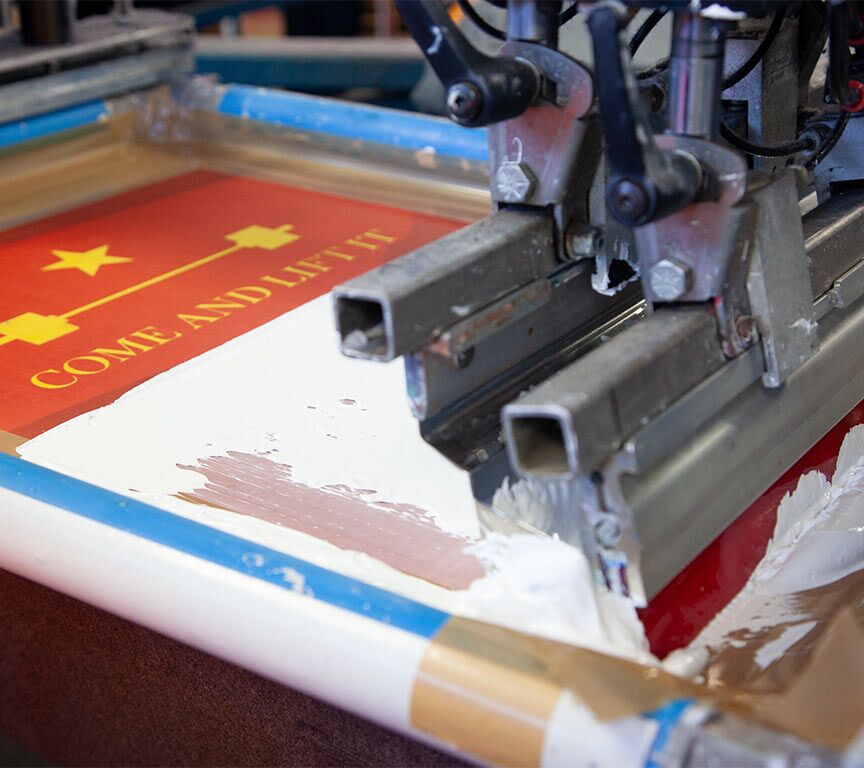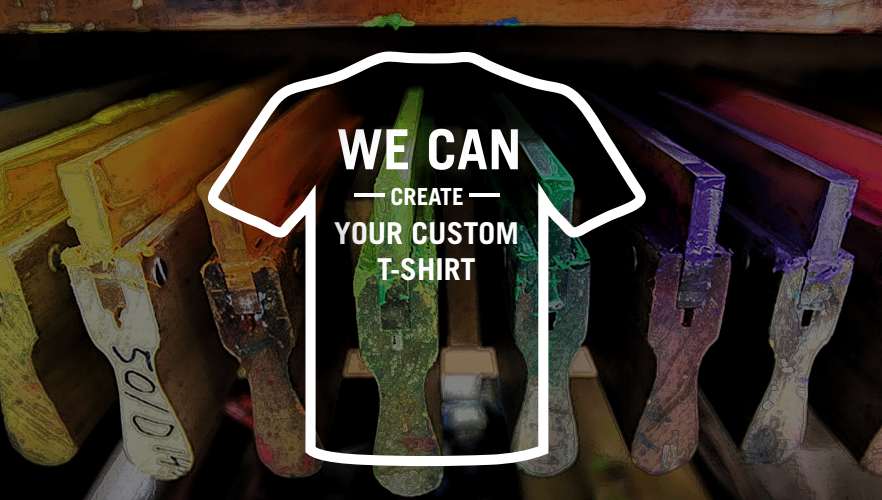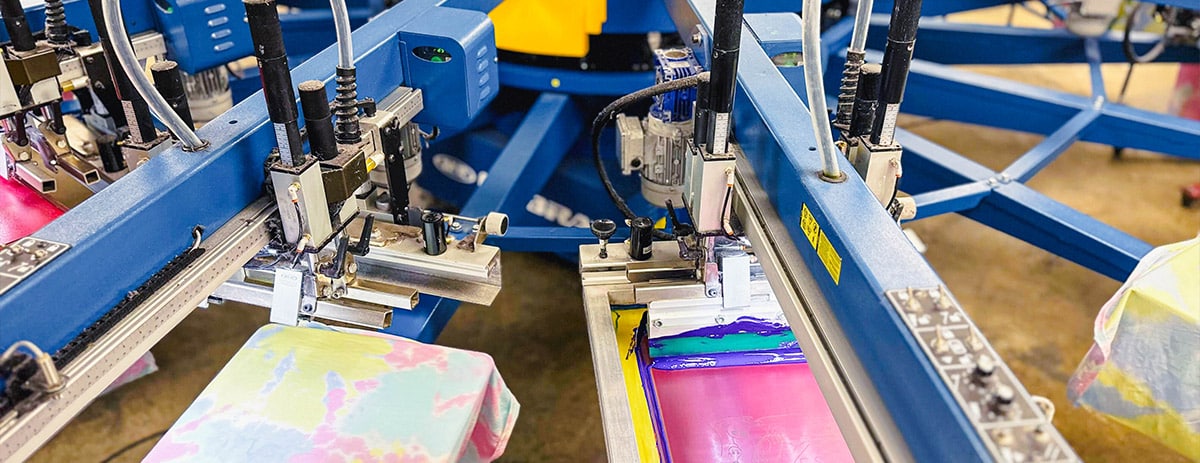High-Quality Custom Screen Printing for Team Apparel
High-Quality Custom Screen Printing for Team Apparel
Blog Article
Display Printing Uncovered: Everything You Required to Learn About Tee Shirt and Garment Printing Methods
Screen printing is an interesting technique that integrates art with method, using limitless opportunities for imagination. All set to discover the essential elements that make display printing an art form?
The Basics of Screen Printing: How It Works
When you plunge into screen printing, you'll discover it's both a scientific research and an art. At its core, display printing entails developing a pattern, or display, that enables ink to travel through just in details areas (screen printing kit). You start by selecting your layout and preparing your screen with a light-sensitive solution. As soon as you reveal this emulsion to light, it hardens, leaving your style as a negative room.
Next, you'll blend your inks and prepare your printing surface area. Position the display over the textile, then make use of a squeegee to push ink with the display onto the garment. This process calls for accuracy, as you want clear, vivid prints. After printing, you'll treat the ink with warm, ensuring it adheres to the textile and lasts via cleans. Each action is crucial, and mastering them will boost your display printing abilities, transforming straightforward garments into special, expressive items.
Kinds of Display Printing Techniques
When you understand the basics of display printing, it's time to discover the different methods that can elevate your designs. One preferred approach is typical display printing, where ink is pushed through a stenciled display.
An additional choice is plastisol printing, known for its resilience and vivid shades, making it a favorite for lots of brands. Experiment with halftone printing to produce gradient results and complex designs.
Essential Tools for Display Printing
To attain magnificent results in display printing, having the best devices is basic. You'll require a sturdy screen printing structure, which holds the mesh that transfers your style onto the garment. Next off, spend in top quality squeegees; these are necessary for using ink equally throughout the display.
Selecting the Right Inks and Materials
When choosing inks and materials for screen printing, you need to take into consideration the kind of ink that functions ideal for your project. Believe regarding fabric compatibility to guarantee your styles look terrific and last lengthy. Likewise, explore green ink alternatives to make your printing process extra lasting.
Types of Display Inks
Selecting the right screen ink is essential for achieving lively, long lasting prints that satisfy your task's needs. There are a number of types of screen inks to take a look at. Specialty inks, such as metal or glow-in-the-dark, can add one-of-a-kind results to your layouts.

Material Compatibility Factors To Consider
Comprehending material compatibility is crucial for attaining top notch screen prints, particularly given that different products respond uniquely to numerous inks. Always examine your inks on sample textile to guarantee they stick appropriately and maintain color stability. Additionally, keep in mind that textile weight and texture can affect the last outcome, so choosing the right ink and material combination is important for your task's success.
Eco-Friendly Ink Options
Environmentally friendly inks are becoming a preferred selection for screen printers who want to reduce their environmental impact while maintaining quality. When selecting inks, think about water-based inks, which are less damaging and much easier to clean up compared to conventional solvents.
Furthermore, search for inks made from renewable energies, such as soy or vegetable-based alternatives. By selecting the appropriate inks and products, you'll not only produce sensational layouts but likewise add to a much more lasting printing process. Make the button, and your prints will certainly show your commitment to the environment!
Preparing Your Design for Display Printing

Submit Style Needs
To assure your design looks sharp and lively on material, you'll require to pay close interest to submit layout needs for display printing. Make sure your style has a clear history to prevent unwanted white edges on your prints. Keep color settings in mind; CMYK is standard for display printing, so convert your RGB creates as necessary.
Shade Separation Methods
Color splitting up is a crucial step in preparing your layout for screen printing, and understanding it can considerably enhance your print high quality. You'll require to break your layout into private colors, as each shade needs a different screen during printing. This accuracy not only assures accurate shade representation however also simplifies the printing process.
Resolution and Size
Attaining the very best cause display printing starts with guaranteeing your layout has the appropriate resolution and dimension. Preferably, your artwork must be at least 300 DPI (dots per inch) for sharp, clear prints. If you utilize lower resolution, your last product could look pixelated and amateur.
When it involves size, think about the measurements of your print area. Layout your artwork to match the final print dimension, preferably creating it in the real dimensions you'll be publishing. By doing this, you'll prevent any type of unanticipated scaling issues.
Always check your style in both vector and raster styles. Vector graphics can be scaled without shedding top quality, making them optimal for display printing. Preparing properly will assure your design looks impressive on every garment!
Step-by-Step Screen Printing Process
Display printing is a dynamic procedure that enables you to produce dynamic styles on different surface areas. To obtain started, you'll require a screen, solution, and your chosen ink. First, prepare your display by cleansing it thoroughly. Next off, use the solution equally and allow it completely dry in a dark area. When dry, subject your screen to light with your style put on it, which will certainly set the emulsion where the light hits, developing a stencil - screen printing kit.
After washing out the unexposed solution, your display is ready. Set it up on your printing surface and align your garment beneath it. Pour ink onto the screen and make use of a squeegee to press the ink through the pattern onto the textile. Lift the screen very carefully and allow the print dry. Lastly, cure the ink using warm to ensure sturdiness. That's it! You've effectively screen published your style.
Tips for Effective Screen Printing Projects
While you're diving right into your screen printing jobs, keep in mind that preparation is vital to success. Beginning by collecting all your products-- inks, displays, mops, and garments. A tidy workspace assists protect against undesirable mistakes, so tidy up prior to you start.
Following, confirm your art work is high-resolution and properly sized for your garment. Examine your display for appropriate direct exposure and clean it thoroughly to avoid smudges. When blending your inks, comply with the producer's guidelines to attain the best uniformity.
Throughout printing, apply even stress with your squeegee for consistent outcomes. Do not rush; take your time to confirm each print fulfills your standards. After printing, let your garments completely dry completely prior to taking care of or packaging them.
Finally, always maintain a sample of your benefit future reference. In this manner, you can evaluate your progression and improve your methods in time. Delighted printing!

Regularly Asked Inquiries
How much time Does It Take to Set up a Display Printing Work?
Establishing up a screen printing job typically takes around half an hour to an hour. You'll prepare the displays, mix inks, and change journalism. The moment differs based upon intricacy and experience, so stay arranged!
Can I Publish on Different Fabric Enters Making Use Of the Very Same Method?
Yes, you can print on various material kinds utilizing the exact same technique, yet you'll need to adjust your settings and inks. Some materials soak up ink in a different way, so experimenting assurances the ideal results for each and every product.
What Prevail Errors to Prevent in Display Printing?
When display printing, prevent usual blunders like utilizing the incorrect ink, overlooking proper direct exposure times, or missing pre-press checks. Always check your setup and maintain clean displays to assure top quality outcomes each time.
How Can I Appropriately Clean and Preserve My Screen Printing Tools?
To correctly clean and preserve your display printing devices, you need to regularly clean screens with proper solvents, examine squeegees for wear, and guarantee all devices are kept dust-free and completely dry. Uniformity protects against expensive repair work and improves efficiency.
Is Display Printing Ecologically Pleasant Contrasted to Other Approaches?
Display printing can be more eco-friendly than other approaches, especially if you make use of eco-conscious products and water-based inks. By choosing lasting supplies and techniques, you decrease waste and minimize your effect on the planet.
Screen Printing Uncovered: Whatever You Need to Know Concerning T-Shirt and Garment Printing Methods
At its garment printing core, display printing entails developing a stencil, or screen, that permits ink to pass with only in particular areas. Setting the display over the fabric, after that make use of a squeegee to push ink via the screen onto the garment. One preferred approach is conventional display printing, where ink is pressed via a stenciled screen.When selecting inks and products for screen printing, you require to take into account the type of ink that functions best for your project.
Report this page